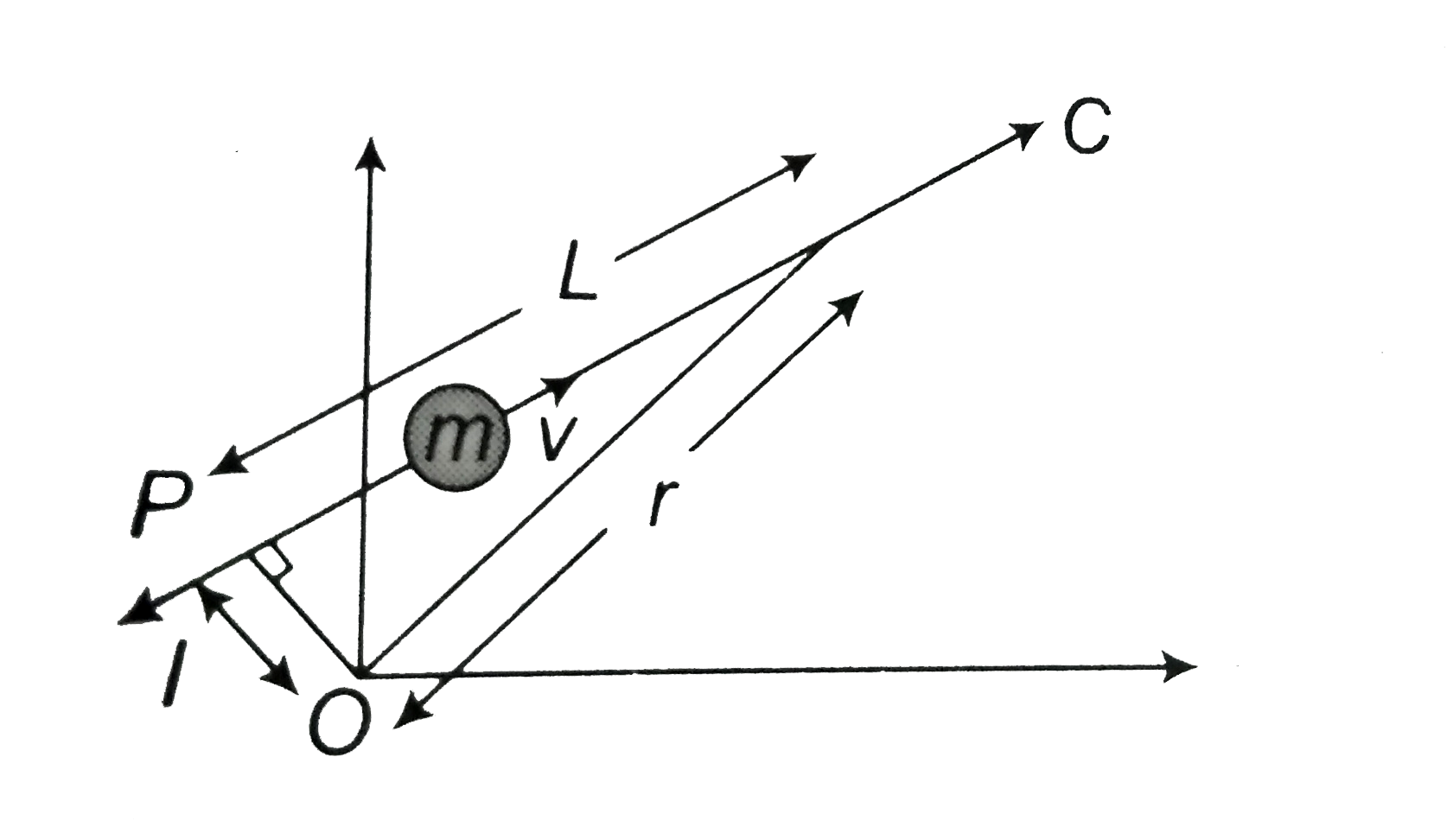A particle of mass m travelling with velocity v and kinetic energy E collides elastically to another particle of mass nm, at rest. What is the fraction of total energy retained by the particle of mass m?
(n+1n)2
(n+1(n−1)2)
(n−1n+1)2
none of these
The correct Answer is:C
To solve the problem, we need to analyze the elastic collision between two particles: one of mass m moving with velocity v and kinetic energy E, and another of mass nm at rest. We will find the fraction of total energy retained by the particle of mass m after the collision.
1. Initial Kinetic Energy:
The initial kinetic energy E of the particle of mass m is given by:
E=12mv2
2. Conservation of Momentum:
In an elastic collision, momentum is conserved. The initial momentum of the system is:
pinitial=mv+0=mv
After the collision, let the velocities of the two particles be v1 (for mass m) and v2 (for mass nm). The final momentum is:
pfinal=mv1+nmv2
Setting the initial and final momentum equal gives:
mv=mv1+nmv2(1)
3. Relative Velocity in Elastic Collision:
For elastic collisions, the relative velocity of separation is equal to the relative velocity of approach:
v2−v1=−v(2)
4. Solving the Equations:
From equation (2), we can express v2 in terms of v1:
v2=v1−v
Substituting this into equation (1):
mv=mv1+nm(v1−v)
Expanding and simplifying:
mv=mv1+nmv1−nmv
mv=(m+nm)v1−nmv
Rearranging gives:
mv+nmv=(m+nm)v1
v1=(m+nm)vm+nm=v1+n(3)
5. Finding v2:
Now substituting v1 back into equation (2):
v2=v1−v=v1+n−v=v−v(1+n)1+n=−nv1+n(4)
6. Calculating Kinetic Energies After Collision:
The kinetic energy of mass m after the collision is:
KEm=12mv21=12m(v1+n)2=mv22(1+n)2
The total initial kinetic energy is E=12mv2.
7. Fraction of Total Energy Retained:
The fraction of total energy retained by the particle of mass m is:
Fraction=KEmE=mv22(1+n)212mv2=1(1+n)2
Final Answer:
The fraction of total energy retained by the particle of mass m after the collision is:
1(1+n)2
The initial kinetic energy E of the particle of mass m is given by:
E=12mv2
In an elastic collision, momentum is conserved. The initial momentum of the system is:
pinitial=mv+0=mv
After the collision, let the velocities of the two particles be v1 (for mass m) and v2 (for mass nm). The final momentum is:
pfinal=mv1+nmv2
Setting the initial and final momentum equal gives:
mv=mv1+nmv2(1)
For elastic collisions, the relative velocity of separation is equal to the relative velocity of approach:
v2−v1=−v(2)
From equation (2), we can express v2 in terms of v1:
v2=v1−v
Substituting this into equation (1):
mv=mv1+nm(v1−v)
Expanding and simplifying:
mv=mv1+nmv1−nmv
mv=(m+nm)v1−nmv
Rearranging gives:
mv+nmv=(m+nm)v1
v1=(m+nm)vm+nm=v1+n(3)
Now substituting v1 back into equation (2):
v2=v1−v=v1+n−v=v−v(1+n)1+n=−nv1+n(4)
The kinetic energy of mass m after the collision is:
KEm=12mv21=12m(v1+n)2=mv22(1+n)2
The total initial kinetic energy is E=12mv2.
The fraction of total energy retained by the particle of mass m is:
Fraction=KEmE=mv22(1+n)212mv2=1(1+n)2
The fraction of total energy retained by the particle of mass m after the collision is:
1(1+n)2
Topper's Solved these Questions
- CENTRE OF MASSBOOK - CENGAGE PHYSICS ENGLISHCHAPTER - CENTRE OF MASSEXERCISE - Multiple Correct
25 Videos
- CENTRE OF MASSBOOK - CENGAGE PHYSICS ENGLISHCHAPTER - CENTRE OF MASSEXERCISE - Assertion - Reasoning
2 Videos
- CENTRE OF MASSBOOK - CENGAGE PHYSICS ENGLISHCHAPTER - CENTRE OF MASSEXERCISE - Subjective
23 Videos
- CALORIMETRYBOOK - CENGAGE PHYSICS ENGLISHCHAPTER - CALORIMETRYEXERCISE - Solved Example
13 Videos
- DIMENSIONS & MEASUREMENTBOOK - CENGAGE PHYSICS ENGLISHCHAPTER - DIMENSIONS & MEASUREMENTEXERCISE - Integer
2 Videos
Similar Questions
A neutron travelling with a velocity v and kinetic energy E collides perfectly elastically head on with the nucleus of an atom of mass number A at rest. The fraction of the total kinetic energy retained by the neutron is
View SolutionA neutron travelling with a velocity v and kinetic energy E collides perfectly elastically head on with the nucleus of an atom of mass number A at rest. The fraction of the total kinetic energy retained by the neutron is
View SolutionA particle of mass m moving with speed u collides perfectly inelastically with another particle of mass 3 m at rest. Loss of KE of system in the collision is
View SolutionA particle of mass m moving with speed V collides elastically with another particle of mass 2m. Find speed of smaller mass after head on collision
View SolutionA particle of mass m moving with speed u collides perfectly inelastically with another particle of mass 2m at rest. Find loss of kinetic energy of system in the collision.
View SolutionA particle of mass m moving with speed u collides perfectly inelastically with another particle of mass 2m at rest. Find loss of kinetic energy of system in the collision.
View SolutionA smooth sphere of mass M moving with velocity u directly collides elastically with another sphere of mass m at rest. After collision their final velocities are V and v respectively. The value of v is
View SolutionA smooth sphere of mass M moving with velocity u directly collides elastically with another sphere of mass m at rest. After collision their final velocities are V and v respectively. The value of v is
View SolutionA body of mass M1 collides elastically with another mass M2 at rest. There is maximum transfer of energy when :
View SolutionA particle of mass m moves along line PC with velocity v as shown. What is the angular momentum of the particle about O?

View Solution
